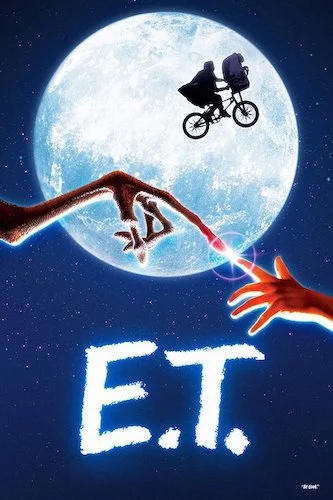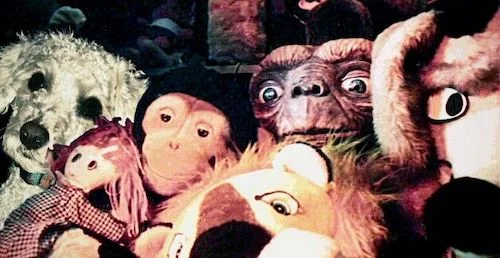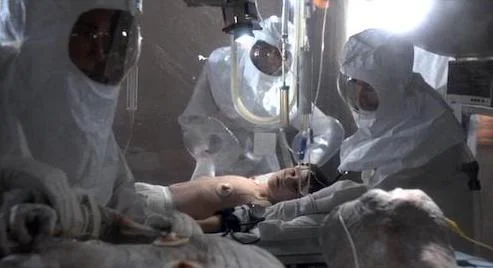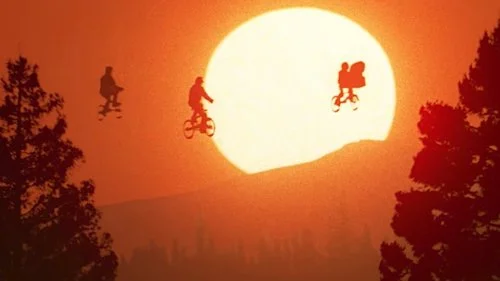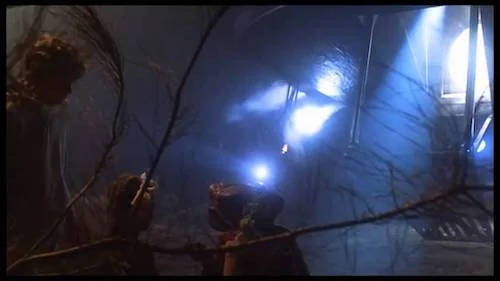National Kids Day: E.T. the Extra Terrestrial
As part of National Kids & Pets Day, we decided finding nostalgic childhood films was a bit easier than combining both themes. We are taking this opportunity to review ten films that have been deemed staples of the youths of varying generations. This article looks at E.T. the Extra Terrestrial.
When it comes to Steven Spielberg's greatest works, nothing comes quite close to Schindler's List. Outside of the film's uplifting ending, we have to be honest: it doesn't quite feel like a Spielberg film. Where do we go next? The director has specialized in blockbuster (or at least mainstream) juggernauts for decades. What do we pick as the next film in line? The strongest Spielberg film that actually feels like a Spielberg film?
There may not be a finer answer than E.T. the Extra Terrestrial. E.T. is your common family film done with the utmost care. There is a familiar air to this film: a children's film that has its eyes set on very specific subject matters, and a disregard for other possible story elements. Why overwhelm kids, right? If we are focusing on how a family film connects with children and adults alike, E.T. may be one of the finest examples. Not many works are cinematically magical to all ages quite like this one.
For children, this is a new world. An unnamed alien (later called E.T.) is accidentally left behind. The opening shots of the foreign species wobbling around are so mystical and fascinating. We spend a good deal of time with this alien troop and their research on Earth. One fellow got left behind. We don't need to know much more than that.
E.T. hiding amongst toys.
We cut to a struggling family. Elliott's father never came back. His mother has to juggle every responsibility (and then some). His siblings are reacting in their own way. Elliott himself cannot quite shake off the idea that his father may come back. It's a devastating subplot that doesn't get brought up too often. Once again, it doesn't need to. Every decision and thought process seems to be linked to this departure.
There is an importance to this personal thread. This isn't artificial empathy just to nuance a film. Elliott finally discovers E.T. and vows to take care of him. When you are a child, this seems like a new friend. Sure. Elliott is lonely, and now has a best bud that he can help teach the ways of his own world (while learning about the distant planet this alien is from). We eventually find out that the alien is trying to get home. Elliott is not selfish. He wants his new friend to be happy again. He begins to help him right away.
Now, watch this film as an adult. Elliott is essentially discovering the sacrifices his mother has to make in her own predicament. Firstly, Elliott and E.T. are linked telepathically (I doubt it has anything to do with the clever choice of a name that starts and ends in an E and a T; you can't mentally erase Elliott's subtle easter egg name now). Whatever E.T. is experiencing, Elliott feels as well (sore, sleepy, drunk). When matters get dicey, Elliott is as sick as E.T. is. This is a child close to death because his alien friend is. This is a self sacrifice to ensure a loved one has healthiness of some sort even until the bitter end.
Elliott allowing his body to shut down so E.T. can survive.
E.T. is also taught a number of "Earth rituals" by Elliott, but you can see these lessons as a guardian raising a child. E.T. doesn't talk until he is encouraged. He also slowly opens up and begins exhibiting his powers (raising deceased beings, including plants, to life, and levitation of objects). In the same way that Elliott is showing E.T. a new world, he is receiving a discovery himself.
The bonding in this film is special, because it transcends a simple camaraderie. The compassion a boy has for a lost alien, and the alien has for his saviour, is powerful and affective. This is a family film that follows conventions and boundaries, but it is a magnification of why these tropes work in the first place. Every creative decision is impactful.
A great deal of this success comes from how the film was made. The special effects surrounding E.T. are remarkable. The actual alien animatronic is highly detailed for the early '80s. The many film making techniques used to make this story come to life are all clever. I would insist that only very few have aged poorly, and that the majority of the film's science fiction elements are still tangible.
An iconic shot of E.T. lifting children on bicycles using psychic powers.
Ironically, the recent computer generated elements are the ones that have aged terribly. I can understand why Spielberg and George Lucas may have thought re-edits of their old films was a good idea; why not achieve the ideas that are possible now but were not before? What they did not foresee is how quickly CGI ages, and modern releases of E.T. contain glaringly sore moments where CGI fights with the real.
This is no reason to deduct marks from the film. Try to find the original film, and there is nothing to worry about. The largest mea culpa was the decision to replace the guns of officers with walkie talkies: a painfully obvious transition that makes little sense, and sterilizes the severity of the film's climactic moments.
These changes made many years later are the works of the adults in this film: the ones that value E.T. as a science experiment or an outsider. The original film was made by Spielberg when he was thinking like Elliott: with the mindset of what is the most beneficial decision for E.T. himself.
The riveting concluding scene.
Otherwise, how can you go wrong with this one? The John Williams score might be overdone now, but that's only because there was nothing like it at the time. The brooding cinematography (by Allen Daviau) is quite dark for a childrens film, which correlates to some of the more mature themes later. There might be some swearing, but this is around the height of the PG rating.
With the right guidance, E.T. goes from a fun and moving alien tale, to a magnificent experience of vicarious sympathy. It relishes in it's simple (yet glorified) simplicity. This is the work of the deepest creativity; the kind where cuts are made to ensure accessibility comes before brilliance, yet the end result has not suffered one bit. There have been many imitators of E.T., but none have come even close. E.T. was an emotion that needed to be shared, not an oil patch that had to be rediscovered after one successful find.
Andreas Babiolakis has a Masters degree in Film and Photography Preservation and Collections management from Ryerson University, as well as a Bachelors degree in Cinema Studies from York University. His favourite times of year are the Criterion Collection flash sales and the annual Toronto International Film Festival.

